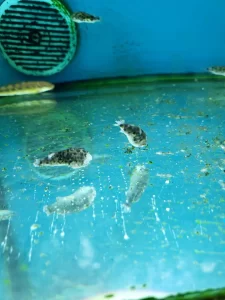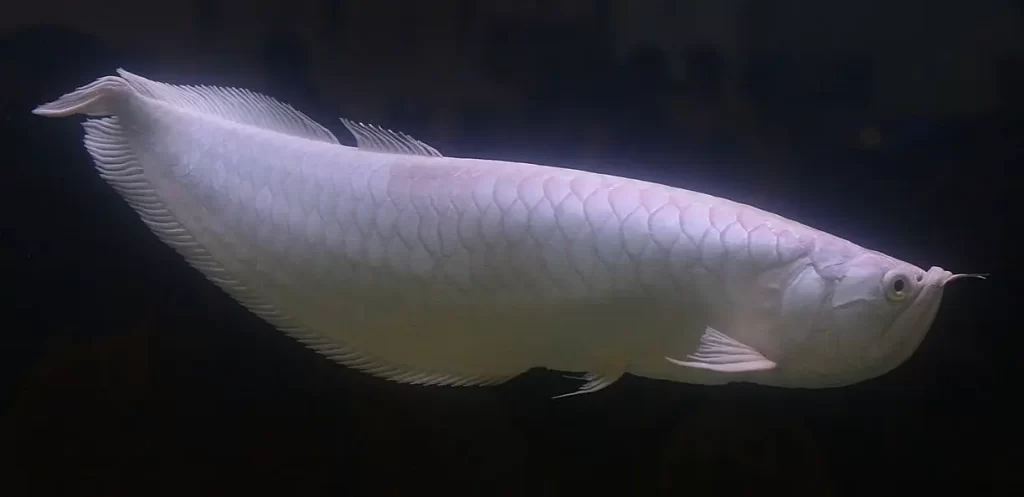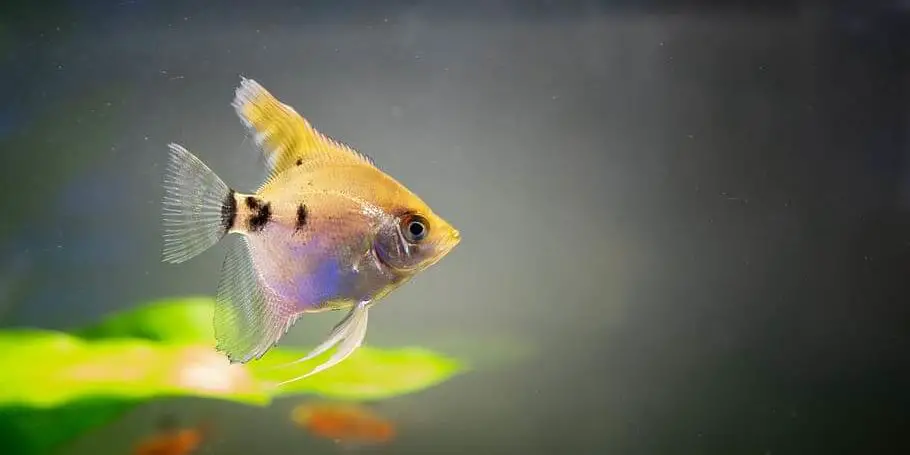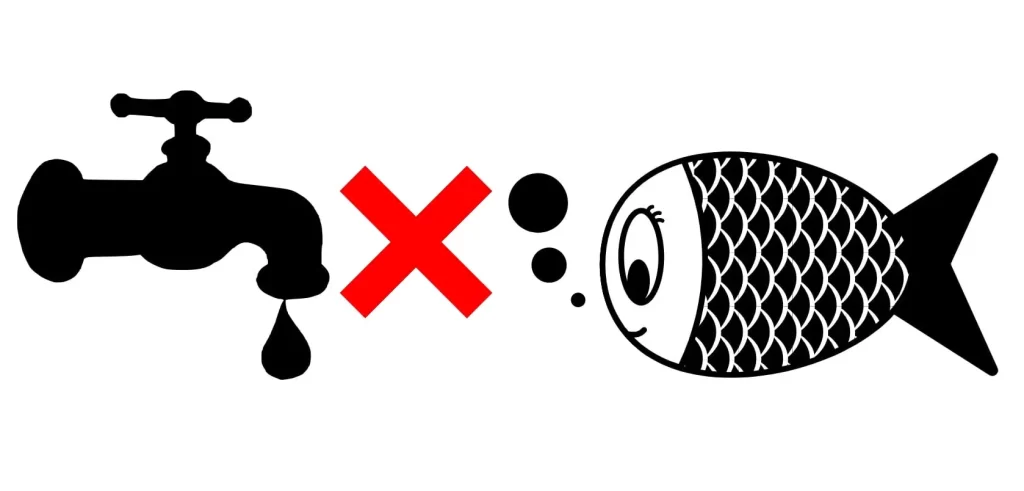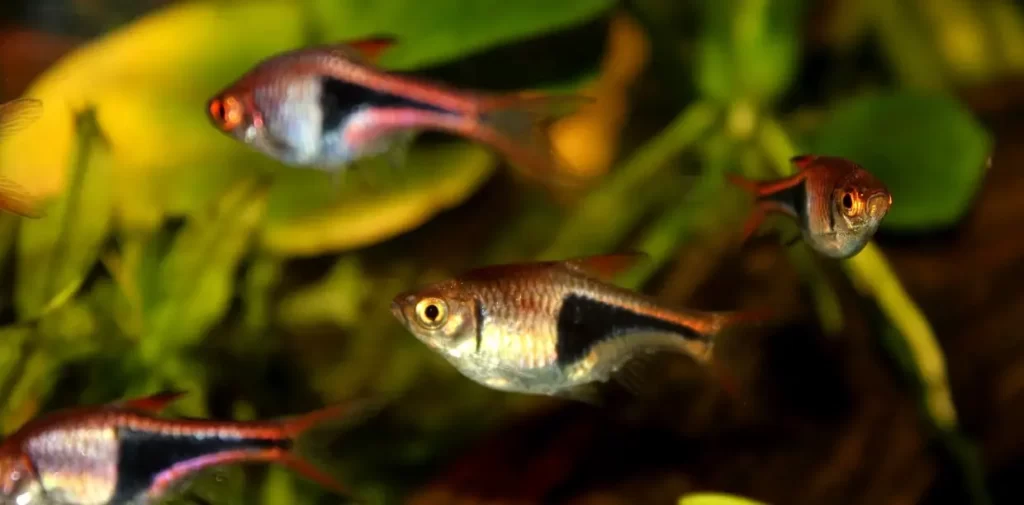Fin rot is one of the most common bacterial diseases in aquarium fish. Fortunately, the disease is preventable since this health condition is easy to spot. The fish affected with this disease will have its fin torn and ragged as if it is rotting away. Fin rot can affect a variety of freshwater as well as saltwater fish like betta fish, goldfish, angelfish, pond fish, tetras, and so on. Although there are many causes of fin rot like bad water quality, poor care of fish, exposure to the infected fish, and fin nipping, the root cause of fin rot is often related to stress. Fin rot treatment is easy in its initial stage.
Fin rot also sometimes known as tail rot, starts around the edges of tail or fins. Then gradually damages the tail tissue reaching the base of the fin. If you failed to treat fin rot properly, it could permanently damage fish’s fins, and the fish may die due to bacterial infection.
Fin rot is also highly contagious; it can transmit to another host body. You should transfer you sick fish to a quarantine tank immediately, so it doesn’t affect other fish in your aquarium.
Although any fish can suffer from fin rot, bettas and goldfish seem to be particularly susceptible to this disease.
Causes of Fin Rot
From my research, I found out that there are several reasons fish suffers from fin rot disease. As fin rot is a bacterial disease, it is caused by different types of gram-negative bacteria, including Vibrio, Aeromonas, and Pseudomonas Fluorescens. These bacteria feed on fin membranes of a fish, damages the fin’s tissue, which is then vulnerable to secondary fungal infections.
So, the most significant cause of fin rot disease is the poor condition of the living environment. Poor water quality leads to overgrowth of gram-negative bacteria and spreading of diseases through the tank. To maintain your water quality, you need to stop overfeeding your fish, stop overcrowding your aquarium and do water changes regularly.
When you overfeed your fish, they produce more waste, and the uneaten food will decay which will eventually degrade your water quality. Likewise, stress is the root cause of fin rot disease which is due to overcrowding your aquarium.
The bacteria that causes fin rot exists typically in the aquarium. These bacteria usually don’t infect fish unless they are stressed or injured. One example might be: Aggressive fish might damage the fins of other fish, which increases stress in fish leading the risk of infection. Bacterial infection or even a fungal infection can easily invade the injured fins or tail.
Symptoms of Fin Rot
The most notable physical signs of fin rot are the presence of the uneven white cotton-like substance and fuzzy lining on the edge of fins. Other symptoms include inflamed patches on the edge of fins, discoloration on the edge of fins appearing milky on the edges.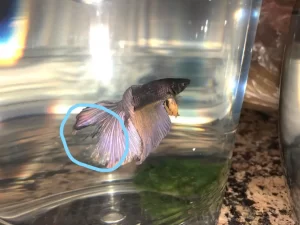
As the infection spreads through tail or fins, a small piece of fins dies and begins to fall off leaving ragged edge. Which overtime leads fins to become shorter and shorter as dead tissue continues to fall off. The affected area may become inflamed with bloody red patches.
Fin rot opens the door to many other secondary diseases. The fungal infection is the most common one. You can notice fungal infection to develop along the ragged edges of the fin.
Other behavioral signs or symptoms of fin rot are the loss in appetite you might have noticed that you fish suffering from fin rot has stopped eating food. You fish may seek relief by rubbing its body on the hard surface and decorations. If fin nipping is the cause of fin rot, the fish will feel stressed or “bullied.” Overall, fin rot does not cause any other behavioral complications.
Fin Rot Treatment
Fin rot is easy to cure in its early stage. The first step to fin rot treatment is to improve your aquarium water quality and treat your water for bacteria that causes fin rot. For this API POND MELAFIX Pond Fish Bacterial Infection Remedy is the best product which I have been using for years to treat various diseases without adverse effect. Melafix has a very high success rate of treating your fish and water of any illness. You can get the medicine from Amazon.
Treatment of fin rot should include a frequent water change, about 10% water in 3 days interval. Vacuum the gravel if there is any food debris or dead plant matter and avoid overfeeding in the future.
Avoid foods that are expired. As the food expires, it loses the nutrients and vitamins. Feed your fish with fresh, high-quality food in small quantity at a time. It is far better than frequent large feedings.
Different fish requires different aquarium parameters. So, check your tank’s pH, temperature, and hardness and make sure it is appropriate to your fish.
After performing these three steps, the root cause of the disease will be corrected. Now you can add your antibiotics and will usually cure the disease itself.
There are a variety of fish antibiotics that are formulated to help control bacteria in fish. Fish Doxy ™, Fish Mox®, and Fish Flox are all effective against gram-negative bacteria.
You can also add aquarium salt to your aquarium since it has many beneficial components that will help your fish to heal quickly and inhibit both bacterial and fungal growth. But you should avoid using aquarium salt if the fish is scale-less fish as they are quite sensitive to salt. Use one tablespoon aquarium salt for every five gallons of water.
Recommended Products to cure Fin Rot
If you want to cure you fish in a hospital tank here are the steps.
Steps for Treating Fin Rot
Step 1: Transfer infected fish to a hospital tank
Start by removing infected fish from the main tank and place it to a clean and unchlorinated water. Do not keep infected fish with other fish since the disease is highly contagious. I have heard this questions a lot: Can fin rot affect human, don’t worry you can touch you fish it won’t spread to human but make sure you wash your hand properly because bacteria from your hand can infect your fish.
Step 2: Clean you main tank
The bacteria that causes fin rot needs to be eliminated from the main tank so that it won’t spread to other fish.
-Drain aquarium water completely
-wash all the tank accessories
-Promote the nitrogen cycle in the aquarium
-Monitor aquarium water parameter
-Transfer your fish
Step 3: Remove chemical media
Chemical media absorbs all the chemicals from the water. So to effectively treat your fish remove any chemical media you are using to clean your tank like activated carbon.
Step 4: Use antibiotics for fin rot
If the fin rot doesn’t improve within a few days of cleaning and treating your hospital tank, it’s time to treat your fish with antibiotics. Use Melafix, tetracycline, API Fin and Body Cure, Jungle Fungus Eliminator medicine to treat your fish. Follow the dosage directions as directed on the label.
Step 5: Monitor your fish and transfer your fish
Now the antibiotics will kill off all the fungal infections and bacteria causing fin rot. The Fin rot should have stopped by now. You will notice the fins of your fish starts to grow. Now you can transfer your fish to the main tank. And prevent fin rot from happening again.
How to know if Fin Rot is cured?
In about one week of treating your fish, you will know the fin rot is cured once you stop seeing white stuff in your fish fin. It is likely that the fin rot has healed. Depending on how bad the fin rot is if you treat fin rot before it completely eats away the tail or fin, the fin will grow back normally. It can take about 6-8 months for the fins to grow back completely.
Preventing Fin Rot
You fish might get fin rot due to various reasons. Some of them are adding a contaminated fish, overcrowding the aquarium, poor water quality, overfeeding, bullying tank mates, and so on.
So, when buying a tropical freshwater fish, make sure you diagnose the fish with symptoms mentioned above. As said, fin rot is a bacterial disease; even if the new fish doesn’t contain fin rot symptoms, the water might be contaminated with bacteria. Therefore you should always add your new fish to the quarantine tank before adding the fish to the main or display tank s that you can monitor the fish even further.
A significant role that plays preventing fin rot is REGULAR MAINTENANCE. Keep your aquarium environment clean. Make sure the water parameter suits the fish you are keeping. Keep an eye on the quality of your aquarium water or your pond. You can buy various gadgets to test your water quality. Do 10% water change each week to ensure the water remains clean.
Python No Spill Clean and Fill Aquarium Maintenance System
Avoid overcrowding your tank, watch fights between your fish. You should only keep fish that are compatible with each other since fin nipping can cause stress level to rise which leads to fin rot disease.
Treatment should be done in such a way that the disease won’t return. I will be explaining the procedure in steps.
If you notice your fish developing fin rot, isolate the infected fish immediately to a hospital tank and treat the tank water with Melafix so that it won’t affect any other fish.
To minimize the nitrate level and promote healthy nitrogen cycle in aquarium add hardy plants like java moss, amazon sword, anubias, and java ferns.
If you are setting up the tank then use API quick start notifying bacteria to boost up the nitrogen cycle.
Once you open the fish food packet, it will decrease its nutrition values in 2 months. So, always buy fish food that the fish can consume within two months. When feeding, avoid overfeeding your fish. Keep the volume low, give them what they can finish within three minutes and always remove uneaten food. Almost all fish keepers make the most common mistake “Overfeeding “.
FAQs on Fin Rot
Is fin rot contagious to humans?
Don’t worry you can touch you fish it won’t spread to human but make sure you wash your hand properly because bacteria from your hand can infect your fish.
Will fin rot kill my fish?
If you don’t treat fin rot properly, it causes your fish to become discolored and lethargic and can lead permanent damage to fish and can even kill your fish.
What causes fin rot in pond fish, freshwater fish, and saltwater fish?
The primary cause of fin rot is poor condition of your fish tank or pond water. Other reasons are due to overfeeding, overstocking of fish, not maintaining your water parameter.
What does fin rot look like?
The fish affected with this disease will have its fin torn and ragged as if it is rotting away. Fin rot also sometimes known as tail rot, starts around the edges of the tail or fins. Then gradually damages the tail tissue reaching the base of the fin. If you fail to treat fin rot, it can permanently damage fish’s fins, and the fish may die due to bacterial infection.
Can fish survive fin rot?
Yes, the fish can survive fin rot once you eliminate the bacteria causing fin rot and start the preventive measure.
Will fin rot grow back?
Yes, the fin rot can grow back if the water condition again deteriorates. Treatment should be done in such a way that the disease won’t return.
Do fish fin grow back after fin rot?
Depending on how bad the fin rot was if you treat fin rot before it completely eats away the tail or fin, the fin will grow back normally. It can take about 6-8 months for the fins to grow back completely.
Can fin rot heal on its own?
Once you eliminate the bacteria causing fin rot, and start treating your water and maintain water parameter, fin rot can heal on its own in its initial stage. But if the disease gets worse, you need to add antibiotics to heal the wound.
Can fin rot spread to other fish?
Fin rot is a highly contagious disease; if any other fish is being bullied or is stressed, it is likely that the fish will get this disease.
Can fin rot kill fish?
Yes, the fin rot can kill the fish.
Is fin rot bacterial or fungal?
Fin rot is a bacterial disease which will lead to the fungal infection on the fin; then the fin starts to melt.
Does fin rot spread?
Yes, fin rot spreads through the fish fins. It starts around the edges of the tail or fins. Then gradually damages the tail tissue reaching the base of the fin.
How to treat fin rot with aquarium salt?
You can use aquarium salt to prevent or treat fin rot if the fish has scales in its body. Scale-less fish are quite sensitive to salt. Use one tablespoon aquarium salt for every five gallons of water.
How to prevent fin rot?
Quarantine your new fish, maintain water parameter, do a regular water change, do not overfeed your fish, don’t overstock your tank.
How to tell when fin rot is cured?
In about one week of treating your fish, you will know the fin rot is cured once you stop seeing white stuff in your fish fin. It is likely that the fin rot has healed.




